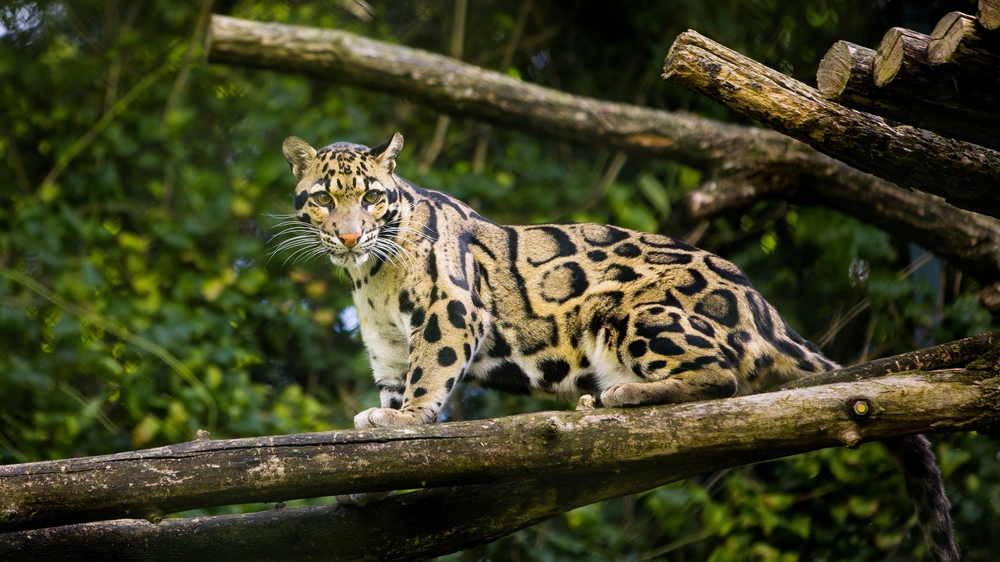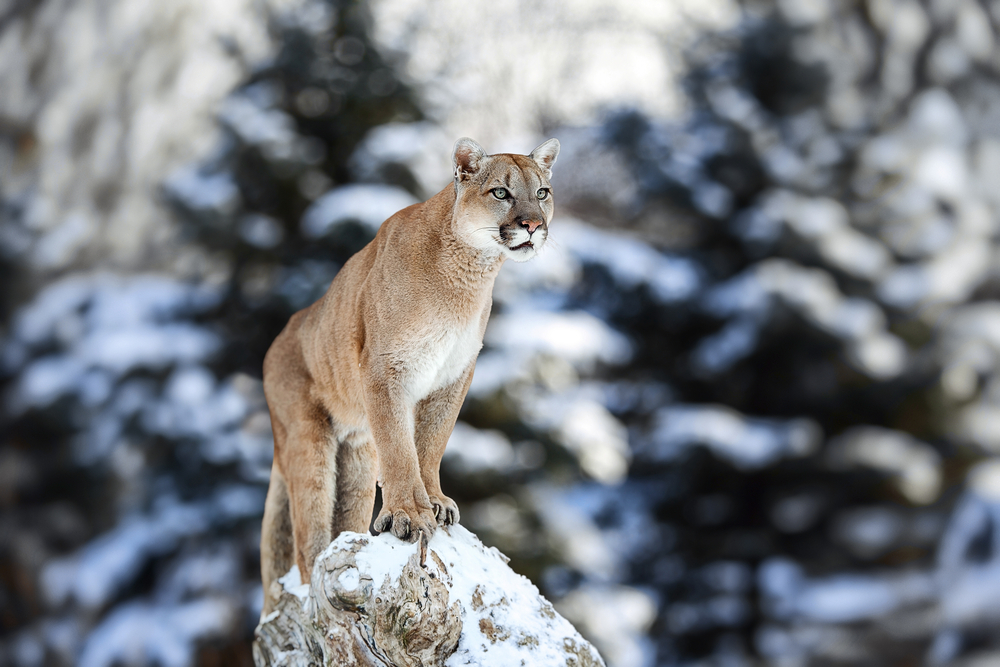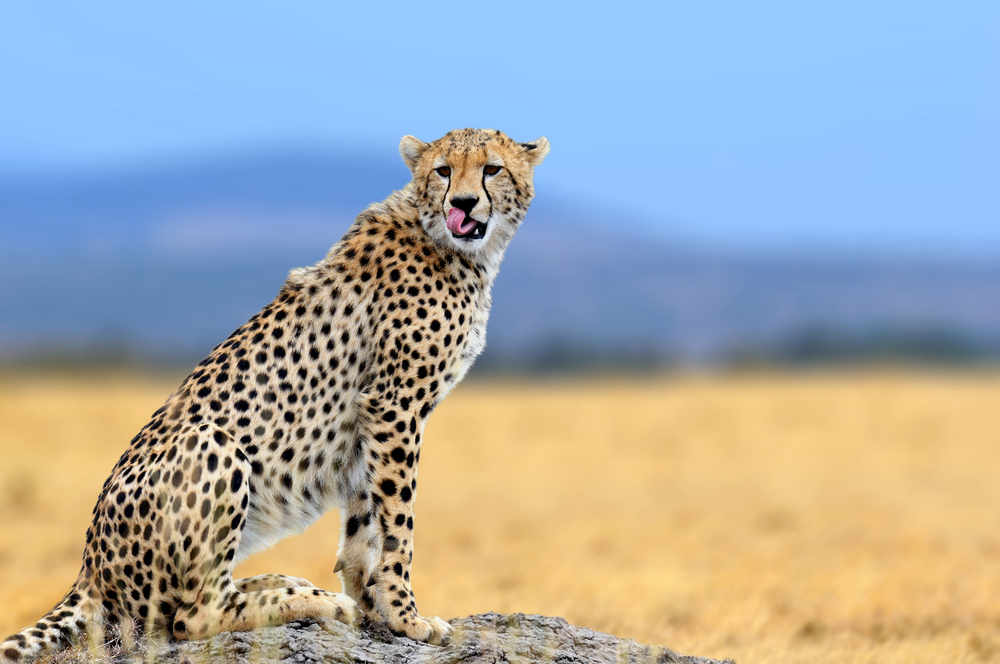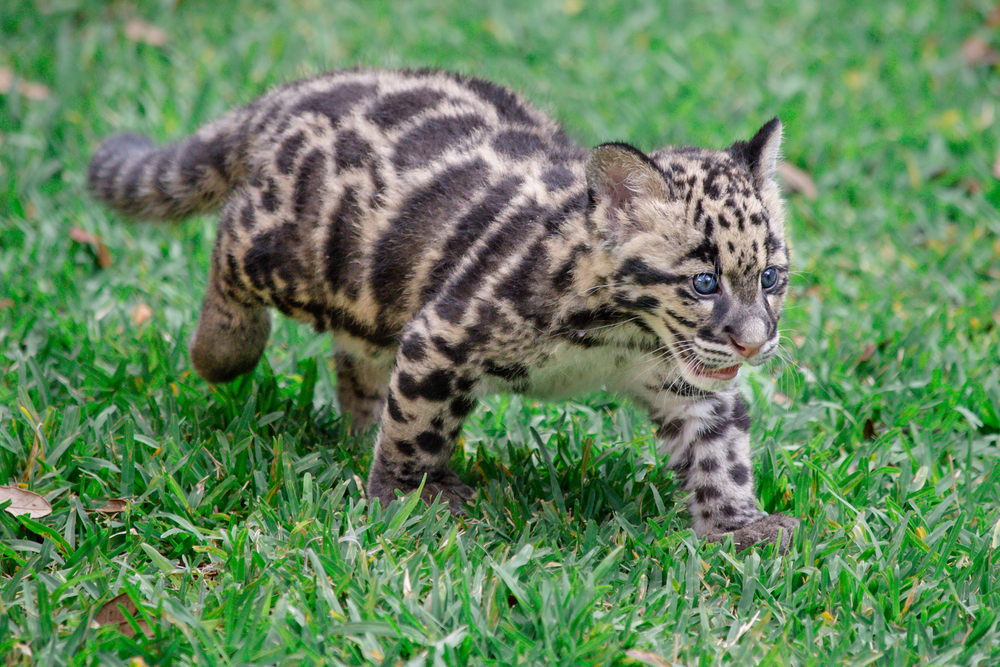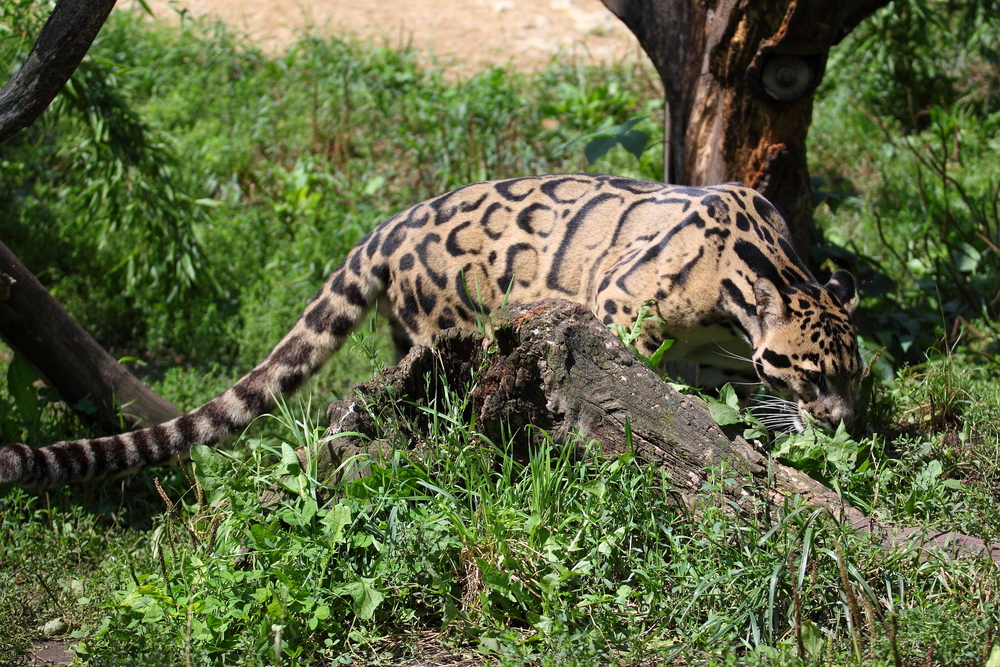Clouded leopards and leopards are two distinct big cat species with several differences in their physical characteristics, behaviors, and habitats. Here are some key differences between them:
- Species:
- Clouded Leopard (Neofelis nebulosa): Clouded leopards belong to the genus Neofelis and are a separate species from leopards. They are native to the dense forests of Southeast Asia.
- Leopard (Panthera pardus): Leopards are a member of the genus Panthera and are one of the five “big cats” within this genus. They have a wide distribution range across Africa and parts of Asia.
- Physical Appearance:
- Clouded Leopard: Clouded leopards are smaller than leopards and have a unique coat pattern with irregular dark blotches and spots on a pale background. Their appearance is more “clouded” and less rosette-like than leopards.
- Leopard: Leopards have a golden-yellow coat covered in distinctive rosettes (rose-shaped spots) with no apparent clouds or blotches. They have a sleeker appearance compared to clouded leopards.
- Size:
- Clouded Leopard: Clouded leopards are smaller, with an average body length of about 2.6 to 3.3 feet (0.8 to 1 meter) and a tail length of 2.3 to 3.5 feet (0.7 to 1.1 meters).
- Leopard: Leopards are larger, with an average body length of about 4 to 6.25 feet (1.2 to 1.9 meters) and a tail length of about 2.6 to 3.5 feet (0.8 to 1.1 meters).
- Habitat:
- Clouded Leopard: Clouded leopards are primarily arboreal (tree-dwelling) and are often found in dense tropical and subtropical forests of Southeast Asia. They are highly adapted to climbing trees.
- Leopard: Leopards are more adaptable in terms of habitat and can be found in a wide range of environments, including grasslands, savannas, woodlands, and mountains. They are known for their adaptability to both arboreal and terrestrial lifestyles.
- Behavior:
- Clouded Leopard: Clouded leopards are primarily nocturnal and solitary animals. They are known for their agility in trees and are skilled climbers.
- Leopard: Leopards are also mostly solitary and have a wider range of activity patterns, with some being nocturnal, others diurnal, and some crepuscular. They are more versatile in their hunting behaviors.
- Range:
- Clouded Leopard: Clouded leopards are found in Southeast Asian countries, including parts of Nepal, India, Bhutan, Myanmar, Thailand, Malaysia, and Indonesia.
- Leopard: Leopards have a much broader range, with populations in Africa, India, Sri Lanka, Southeast Asia, and parts of the Middle East.
Despite these differences, both clouded leopards and leopards are fascinating and important species in the ecosystems they inhabit. Each has its own unique adaptations and roles within their respective environments.



































































